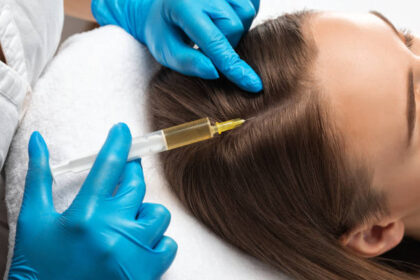Skin tags may be harmless, but when they appear in noticeable or sensitive areas, many people choose to have them removed for cosmetic or practical reasons. A common concern among those considering removal—especially in highly visible spots like the face, neck, or eyelids—is whether the procedure will leave behind a permanent scar. In places like Dubai, where aesthetic precision and clear skin are highly valued, this is an important question. If you’re exploring options for Skin Tag Removal in Dubai, understanding the risk of scarring and how to minimize it is key to making an informed decision.
![]()
What Determines Whether a Scar Will Form?
Not all skin tag removals result in scars. Several factors influence whether a scar will appear, including:
Size and location of the skin tag
Removal method used
Skill of the practitioner
Your skin type and healing ability
Aftercare and hygiene post-procedure
Each individual heals differently. Some people are more prone to scarring due to genetics, while others may develop keloids (thick, raised scars) from even the smallest wound.
Which Removal Methods Minimize Scarring?
The good news is that modern techniques for removing skin tags are designed to minimize trauma to the skin and reduce scarring. Here’s how each method compares:
Cryotherapy (Freezing)
Cryotherapy involves applying liquid nitrogen to freeze off the tag. The treated area forms a scab and naturally falls off over time. It’s quick and effective, though mild discoloration or a flat mark may remain temporarily.
Radiofrequency (RF) or Electrocautery
These heat-based methods are among the most precise and controlled. They remove the skin tag with minimal skin disruption, often cauterizing the area as they go. This helps seal blood vessels and reduce the risk of infection and scarring.
Surgical Excision
In cases where the tag is larger, surgical removal might be needed. While this method is slightly more invasive, experienced professionals use fine instruments to cut away the tag with precision. With good aftercare, visible scarring is rare.
Ligation or Laser Removal
Other techniques like tying off the tag (ligation) or laser removal are also gentle on the skin. However, the technique must match your skin type and the location of the tag to ensure optimal cosmetic outcomes.
In Skin Tag Removal, clinics often use a combination of these methods based on skin type, tag size, and location to ensure minimal risk of scarring.
Does Skin Type Matter?
Yes, skin type can influence how you scar:
Darker skin tones may be more prone to hyperpigmentation or keloid formation
Lighter skin types may experience redness or pinkness that fades over time
Sensitive skin might heal slower or react to topical aftercare products
During consultation, a qualified practitioner will assess your skin’s tendency to scar and choose a technique that minimizes the risk.
How Can You Reduce the Risk of Scarring?
Proper aftercare is just as important as the removal method. Here’s how you can help your skin heal smoothly:
Follow Aftercare Instructions
Use any recommended creams or healing ointments exactly as advised. Avoid products that contain harsh chemicals, alcohol, or fragrances.
Avoid Sun Exposure
Sunlight can darken healing skin and increase the appearance of scars. Use sunscreen or cover the treated area if it’s exposed.
Don’t Pick at the Wound
Let any scab fall off naturally. Picking at the skin can reopen the wound and lead to scarring.
Keep the Area Clean and Dry
Gently cleanse the area as instructed and avoid excessive rubbing or moisture buildup.
Stay Hydrated and Eat Skin-Healthy Foods
Support your skin’s healing process from within by drinking water and eating foods rich in vitamins C and E, zinc, and protein.
What If a Scar Does Form?
If a mild scar or pigmentation remains after removal, it typically fades over a few weeks or months. However, if the scar becomes raised, itchy, or pigmented, there are treatments available such as:
Topical silicone gels or sheets
Laser resurfacing
Microdermabrasion or chemical peels
Steroid injections for keloids
These options are often available in Dubai’s aesthetic centers and can help refine the skin’s texture and tone.
When to Worry About a Scar
In most cases, any mark left after removal is small and temporary. However, consult a professional if you notice:
Persistent redness or swelling after 10 days
Thickened, raised, or dark scars forming
Itching, burning, or signs of infection
These symptoms may indicate abnormal healing or require further treatment.
Final Thoughts
So, does skin tag removal always leave a scar? Not necessarily. With proper technique, expert care, and good aftercare, most skin tag removals heal with minimal to no visible marks. In Dubai, where cutting-edge cosmetic care is readily accessible, the risk of scarring can be significantly reduced through professional procedures and personalized aftercare plans. If you’re considering Skin Tag Removal, rest assured that skilled specialists use methods tailored to your skin’s needs—helping you achieve smooth, clear results with minimal healing time and little to no scarring.



